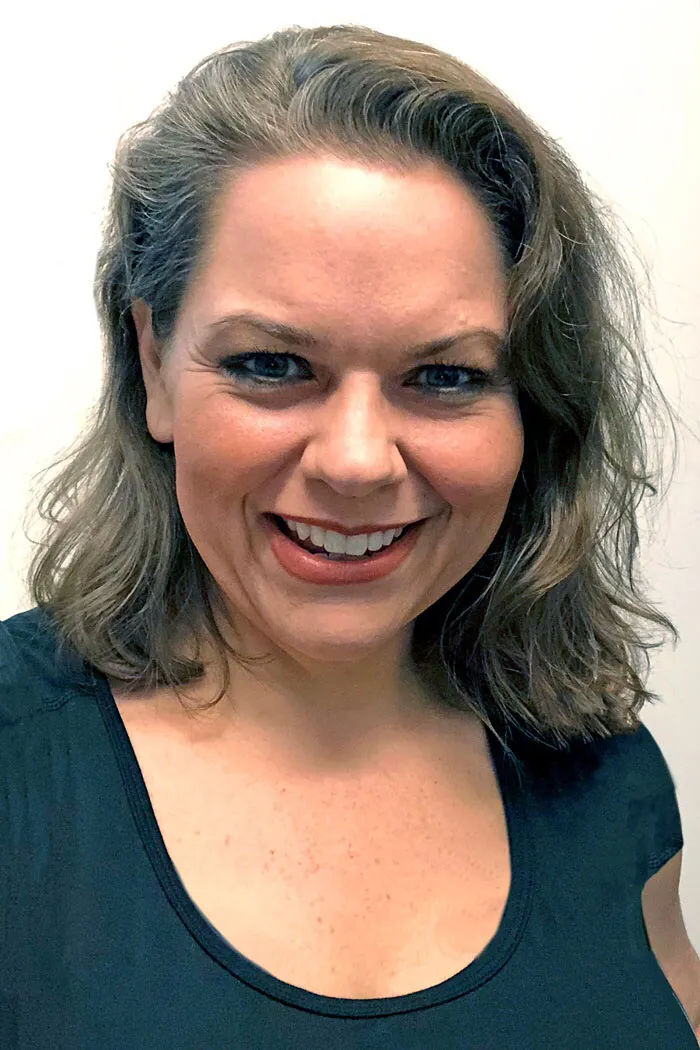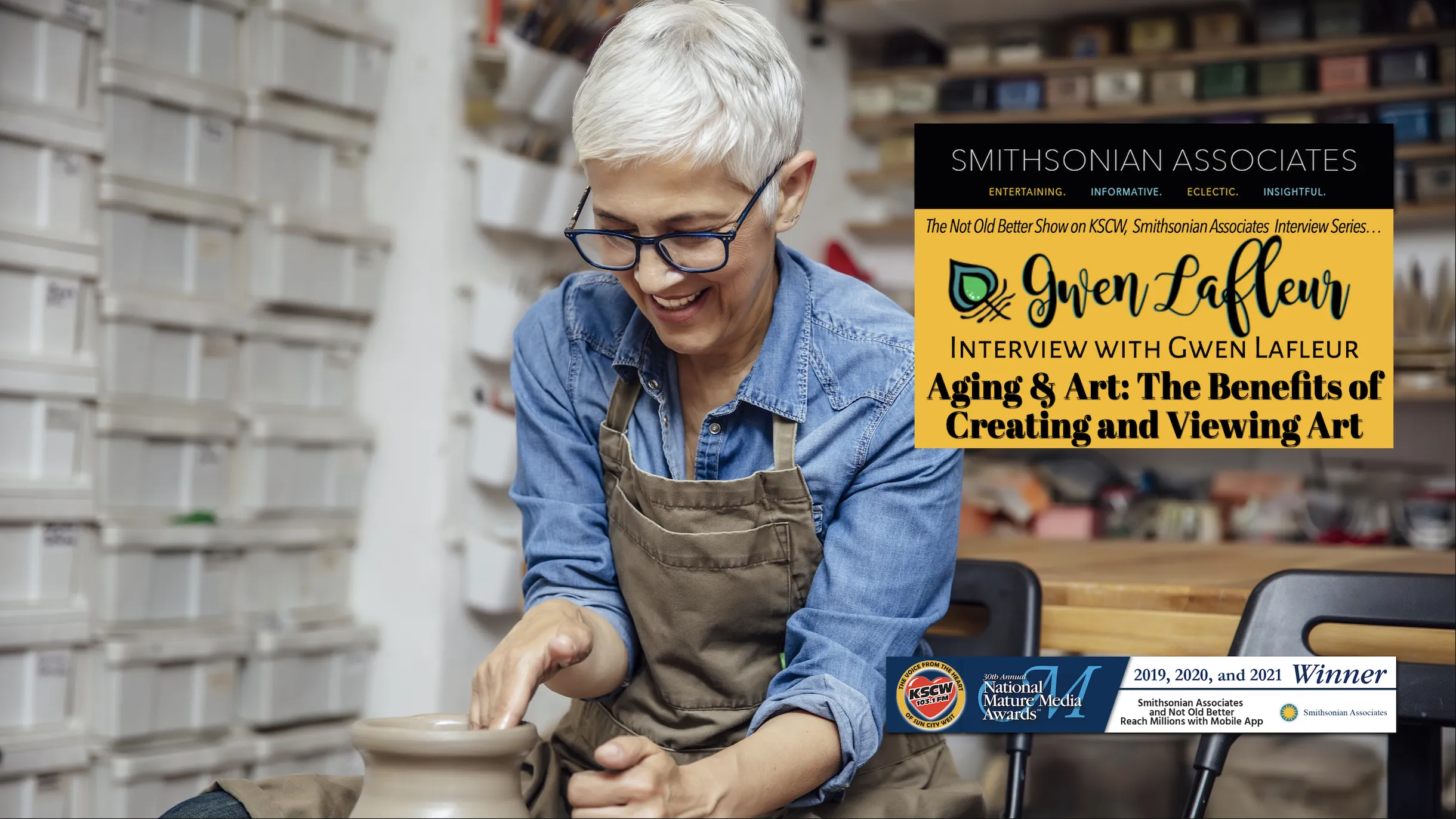Gwen Lafleur – Creativity and the Aging Brain
Smithsonian Associates, The Not Old Better Show
Welcome to The Not Old Better Show. I’m Paul Vogelzang and today’s show will be enjoyed by all, especially if you enjoy creativity, are yourself creative, or viewing the arts and creativity.
Arts positive effects on aging, both for the creator and viewer will rock your soul. Experts from around the world cite research on how creative endeavors — storytelling and singing, weaving and dancing, and painting and poetry — make people’s lives better as they grow older and deal with the challenges of aging.
So great to be with you today, and again welcome to The Not Old Better Show. I’m your host, Paul Vogelzang, and as part of our Smithsonian Associates Art Of Living interview series, we have an excellent interview with mixed media artist Gwen Lafleur, and we’re talking about art today.
It is well known that therapeutic art experiences can supply meaning and purpose to the lives of older adults in supportive, nonthreatening ways. Neurological research shows that making art can improve cognitive functions by producing both new neural pathways and thicker, stronger dendrites.
 Recent clinical research validates what some professionals and others who work with older adults have known for years—that making art is an essential, vital component of activities that offer a wide range of health benefits. Several studies show that art can reduce the depression and anxiety that are often symptomatic of chronic diseases. Other research demonstrates that the imagination and creativity of older adults can flourish in later life, helping them to realize unique, unlived potentials, even when suffering from Alzheimer’s or Parkinson’s disease.
Recent clinical research validates what some professionals and others who work with older adults have known for years—that making art is an essential, vital component of activities that offer a wide range of health benefits. Several studies show that art can reduce the depression and anxiety that are often symptomatic of chronic diseases. Other research demonstrates that the imagination and creativity of older adults can flourish in later life, helping them to realize unique, unlived potentials, even when suffering from Alzheimer’s or Parkinson’s disease.
Neurological research shows that making art can improve cognitive functions by producing both new neural pathways and while brains inevitably age, creative abilities do not necessarily deteriorate. Actually, the aging brain responds well to art by allowing the brain’s two hemispheres to work more in tandem. This ability to use one’s creativity throughout a lifetime and the impact of crystallized intelligence gained from the years of accumulated knowledge and life experiences, help to cultivate the aging, creative brain.
Experts in the field of aging recognize and applaud the importance of both creating art as well as viewing it. Today’s guest, Gwen Lafleur is an artist, instructor and will attest to the significance of expressive art activities. We’ll talk about creating art, learning about art, Gwen Lafleur’s artistic journey and all the benefits that come as an artist and as someone appreciative of art and the joy that art offers.
Gwen Lafleur is a lifelong artist, crafter, designer, and world traveler. Gwen Lafleur has been involved in arts and crafts her entire life, trying anything from drawing lessons to paper crafts and finally finding her true home as a mixed media artist.
Please join me in welcoming to The Not Old Better Show artist, teacher, entrepreneur Gwen Lafleur.
My thanks to our guest today for her generous time and expertise, Gwen Lafleur, and you’ll find more details about Gwen, her art, classes she teaches and her great retail store are available on our website. My thanks to the Smithsonian team for all they do to support the show, and my thanks to you, my wonderful Not Old Better Show audience. Please be safe everyone, wear your masks when needed, encourage those who haven’t to get vaccinated, and let’s Talk About Better. The Not Old Better Show, Smithsonian Associates series. Thanks, everybody.


